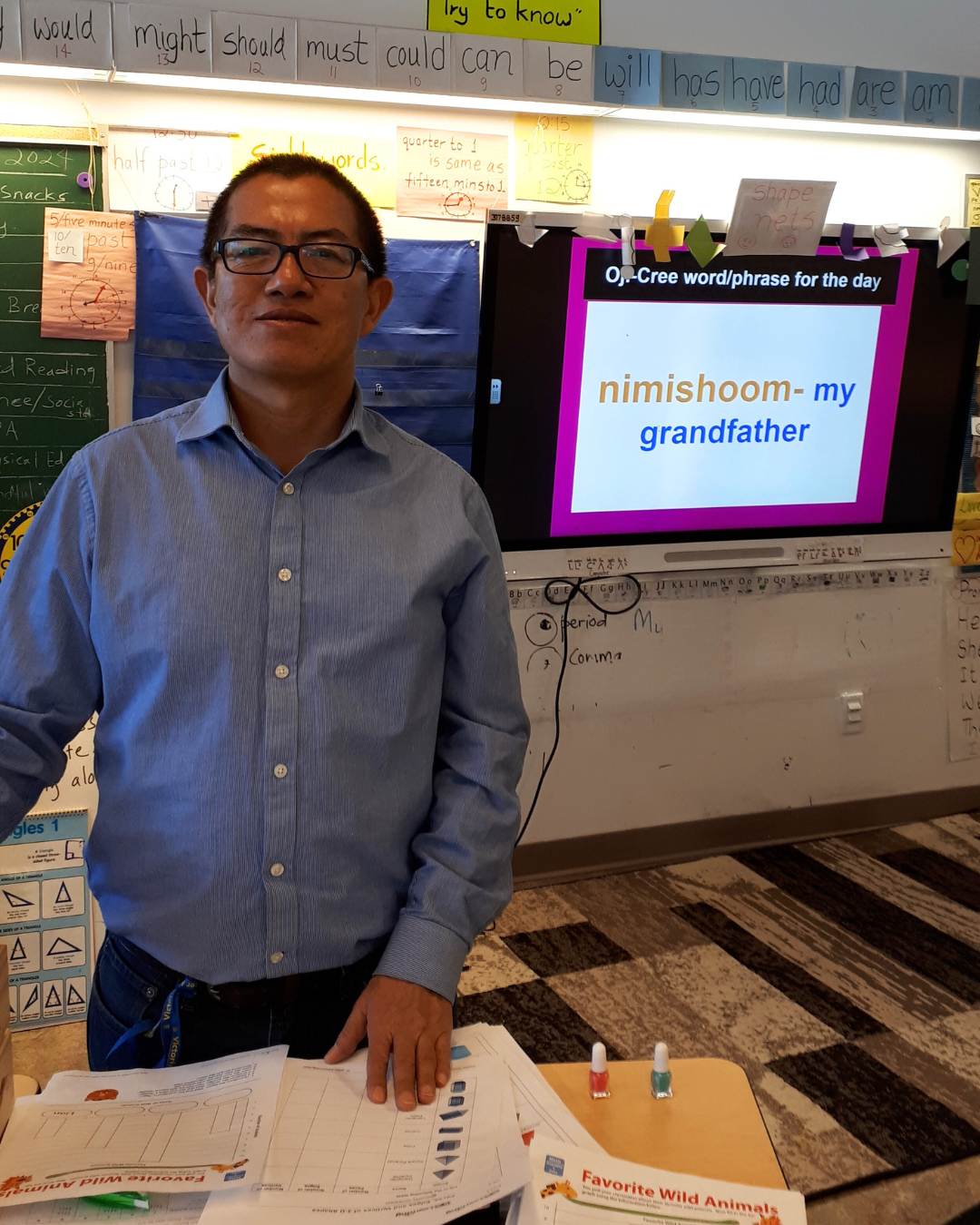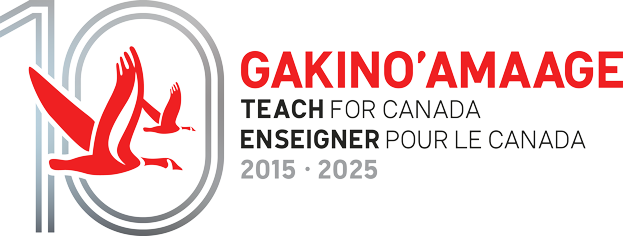Meet Janak Chemjong, a member of Gakino’amaage’s 2021 Cohort and a Grade 3/4 teacher at Victoria Linklater Memorial School in North Spirit Lake First Nation. His focus on welcoming students each day and encouraging consistent attendance highlights the meaningful relationships that teaching in the North makes possible.

Janak Chemjong, a member of Gakino’amaage’s 2021 Cohort, teaches Grade 3/4 at Victoria Linklater Memorial School in North Spirit Lake First Nation.
Janak, a Grade 3/4 teacher at Victoria Linklater Memorial School in North Spirit Lake First Nation, has had a meaningful start to his school year. Like many educators, he entered September with a mix of excitement and uncertainty about what the months ahead would bring. Together with his colleagues, he prepared to welcome students back into the classroom, creating a smooth and positive transition into the new year.
In northern schools, smaller class sizes and multi-grade groupings are common. Many educators see this as an opportunity—it allows them to form stronger connections with students while tailoring support to individual needs. Janak’s Grade 3/4 class of nine students is one example—small enough to make individualized learning a daily practice, while also challenging him to teach across a range of levels. These experiences help educators grow their skills quickly in ways that larger southern classrooms often don’t allow.

Students learning together in a corner of Janak’s classroom.
Still, consistent attendance can be a hurdle in many northern classrooms. The lasting impacts of the Residential School system have shaped family relationships with education, and rebuilding trust takes time. For educators, building strong, reciprocal relationships with students and families is essential.
Janak embraced this responsibility with intention. Each evening, he reached out to parents and caregivers to remind them about the next day of school, then followed up again in the morning to confirm and encourage attendance. If a student missed the bus, Janak quickly let the school office know so they could coordinate a pick-up and ensure the child still made it to class. His consistent communication—often through Facebook Messenger—helped families feel supported and reassured that their child’s presence mattered.
The impact was remarkable. For the first two weeks of school, every student in Janak’s class had 100% attendance. Each morning, watching his students arrive eager and ready to learn was a clear sign that his efforts were making a difference.

Focused and engaged: Janak’s students reached 100% attendance during their first two weeks together.
During the very first week of school, North Spirit Lake First Nation came together for a community moose harvest—a special way to begin the year. Students were able to take part in the process, learning firsthand and sharing in the harvest. For Janak, it felt like a gift: a highlight of back-to-school and a reminder of how cultural practices can be woven into education. The year began with living lessons grounded in tradition and community.
Looking ahead, Janak hopes to integrate more Anishininiimowin language into his classroom. Through Gakino’amaage, teachers like Janak can access support to help realize these goals—whether it’s subsidies for Additional Qualification or professional development courses, Indigenous-led webinars such as the Indigenous Education Speaker Series, or a growing bank of culturally-responsive resources to enrich their lesson planning.
For Janak, the first weeks of the year have already been full of growth, connection, and learning—for both himself and his students. Teaching in the North means navigating unique challenges, but it also opens the door to meaningful relationships with students and families, and to experiences that shape both your teaching and your role within the community.

If you’re a teacher looking for a career that is both challenging and deeply rewarding, Janak’s story is just one glimpse of what’s possible in the North. Learn more about Going North with Gakino’amaage.






